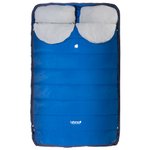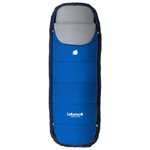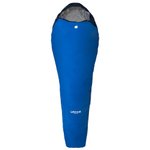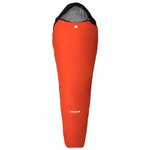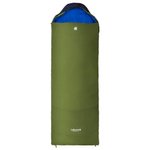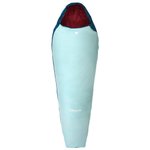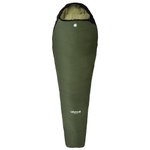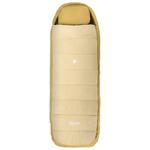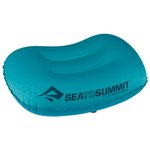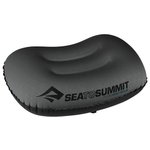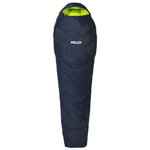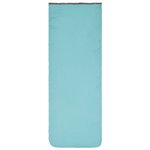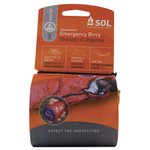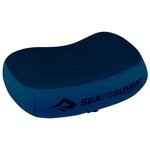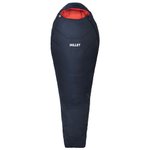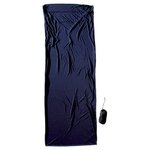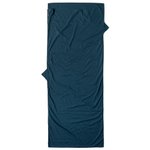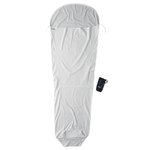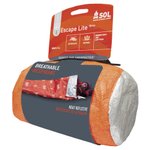Sleeping bags
Find the sleeping bag that meets your needs
Explore a wide range of sleeping bags within our hiking and camping equipment, designed for every type of adventure: bivvying, camping, trekking or winter expeditions. Whether you’re after a lightweight summer model, an extreme cold down bag or a children’s version, discover leading brands such as Ferrino, Sea to Summit, Nemo, Marmot, Millet, Lafuma, Rab and Vaude.
Read more Show less

-
Recommended price
£152.91
-50%
£76.41

 Sale
Sale
-
Recommended price
£89.91
-55%
£40.41

 Sale
Sale
-
Recommended price
£89.91
-55%
£40.41


-
Recommended price
£80.91
-50%
£40.41
- Droitier (Zip Gauche)


-
Recommended price
£80.91
-50%
£40.41
-
- Droitier (Zip Gauche)


-
Recommended price
£80.91
-50%
£40.41
- Droitier (Zip Gauche)
- Gaucher (ZIp Droit)


-
Recommended price
£80.91
-50%
£40.41
- Droitier (Zip Gauche)


-
Recommended price
£89.91
-50%
£44.91
- Gaucher (ZIp Droit)

 Sale
Sale
-
Recommended price
£80.91
-60%
£32.31
-

 Sale
Sale
-
Recommended price
£35.91
-35%
£23.31
-
- M

 Sale
Sale
-
Recommended price
£35.91
-35%
£23.31
-
- M


-
Recommended price
£134.91
-35%
From £87.21
- Regular Left Zip
- Regular Right Zip
- Long Left Zip
- Long Right Zip


-
Recommended price
£35.91
-40%
£21.51
Made from a blend of Lyocell Tencel and polyester, the Sea To Summit Comfort Blend Rectangular bag sheet is super lightweight, so it's discreet among your belongings.

 Sale
Sale
-
Recommended price
£22.41
-40%
£13.41
The SOL Emergency Bivvy is an emergency bivvy, a survival overbag designed to reflect body heat and protect you from the vagaries of the weather.
INCLUDED
DAY RETURNS
Fixed costs

 Sale
Sale
-
Recommended price
£40.41
-35%
£26.01
-
- M


-
Recommended price
£125.91
-25%
£94.41
-


-
Recommended price
£44.91
-9%
£40.41


-
Recommended price
£31.41
-8%
£28.71
-


-
Recommended price
£26.91
-10%
£24.21
-


-
Recommended price
£17.91
-20%
£14.31
Wilsa's Drap Coton Rect Ecru is a lightweight, compact cotton sack sheet, ideal for camping and hiking.

 Sale
Sale
-
Recommended price
£53.91
-25%
£40.41
Designed to be as light and compact as possible so as not to overwhelm you, the Escape Lite Bivv is a survival overbag that also offers strength, breathability, waterproofing and warmth.
Loading...
Down sleeping bags: lightweight and high-performance
Goose or duck down models offer an excellent warmth-to-weight ratio. They’re ideal for trekkers and mountaineers seeking compact, high-performance gear.
- Superior insulation and outstanding packability
- Reduced weight (up to 20% lighter than synthetic models)
- Long-lasting durability when properly maintained
The only drawback: sensitivity to moisture. For damp conditions, it’s best to choose a hydrophobic-treated down or a synthetic alternative.
Synthetic sleeping bags: versatile and durable
Synthetic fibres such as polyester provide reliable insulation even when wet. These models are more affordable and easier to care for.
- Good insulation in damp environments
- Quick-drying and simple maintenance
- More budget-friendly than natural down
They’re perfect for camping, festivals or hikes in mild climates.
Ultralight and compact sleeping bags
For trekking or lightweight bivvying, weight is a key factor. Ultralight models combine premium down fill and technical fabrics to minimise pack weight.
- Minimal weight and compact pack size
- Easy to compress into your rucksack
- Optimised insulation with zoned fill (denser on top)
Extreme cold sleeping bags
Designed for winter expeditions, extreme cold sleeping bags provide exceptional insulation, often rated down to -30°C. Their mummy shape maximises warmth and minimises heat loss.
- Four-season models suitable for bivvying in snow and at high-altitude
- Thermally efficient mummy shape with an enveloping hood
- Best paired with a high-performance insulated sleeping mat
Double sleeping bags and zip-together models
For two-person sleeping setups, there are two main options:
- Double sleeping bag: ideal for static camping, easy to use but heavier.
- Zip-together bags: compatible left/right zips allow two single bags to be joined when needed.
Kids' and baby sleeping bags
Children’s sleeping bags feature the same thermal performance as adult models in a shorter length (around 130 cm), optimising warmth and comfort. For infants, some baby models include safety and ventilation systems adapted to their needs.
Sleeping bags for camping and hiking
Camping sleeping bags focus on comfort and space, while hiking models prioritise low weight and technical design. Mummy, rectangular or blanket shapes allow you to tailor your sleeping setup to your preferences.
0-degree and 4-season sleeping bags
Your choice depends on the lowest expected temperature. Sleeping bags are generally categorised by their comfort temperature rating:
- 1 season: summer use or simple sleeping bag liner
- 2 seasons: spring/summer, mild temperatures
- 3 seasons: versatile use down to 0°C
- 4 seasons: enhanced insulation for extreme cold
Sleeping bag liners and accessories
Sleeping bag liners add an extra layer of hygiene and comfort. Made from silk, cotton or fleece, they extend your bag’s lifespan and increase perceived warmth. You’ll also find pillows and mats in our camping section.
Care and storage
Proper maintenance ensures the longevity of your sleeping bag. For down models, avoid frequent washing and prefer spot cleaning. For a complete wash:
- Use a down-specific detergent at 30°C
- Tumble dry on low heat with drying balls
- Manually separate clumped feathers if needed
For storage, keep your bag in a dry, uncompressed space to preserve loft and insulation performance.
FAQ
What’s the difference between a down and a synthetic sleeping bag?
A down sleeping bag is filled with natural feathers, which is lighter and more compressible. A sleeping bag can also be filled with synthetic fibres, which are more moisture-resistant.
Should you sleep clothed in a sleeping bag?
It’s best to sleep in lightweight, breathable clothing. Too many layers restrict warm air circulation and reduce thermal efficiency.
What is the best sleeping bag?
The best model depends on your needs: down for lightness, synthetic for damp conditions, or a four-season bag for extreme cold.
What is the warmest sleeping bag?
High-end down expedition bags with premium fill power (900 cuin) offer the best insulation, rated down to -40°C.
How do you fold a camping sleeping bag?
Contrary to popular belief, the best way is not to fold it neatly. Stuff the sleeping bag loosely into its compression sack. This prevents pressure points from forming in the same areas each time. For more details, check out our tutorial: How to pack your sleeping bag.
How to choose a sleeping bag?
Define your intended use (camping, backpacking, mountaineering) and select according to comfort temperature, weight and insulation type. Our guide How to choose your sleeping bag provides all the key information to help you find the perfect model.
How to wash a sleeping bag?
Wash at 30°C with a down-specific detergent. Tumble dry on low with tennis balls to restore loft. For a step-by-step guide, check our dedicated article: How to wash your sleeping bag.
Which sleeping bag for the GR20?
Choose a lightweight down bag with a comfort temperature between 0°C and 5°C for cool mountain nights.
Which sleeping bag for backpacking?
Opt for a 3- or 4-season model depending on the season and location. A compact, well-insulated bag ensures a restful night outdoors.
The Glisshop experience
- Extensive selection of sleeping bags for every activity
- Fast delivery and responsive customer service
- Easy returns and expert advice
- Products tested and chosen for their reliability

